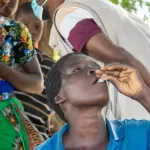Faridabad, August 2024 — The increasing integration of technology into daily life is contributing to a rise in personality disorders among young girls in India, according to mental health experts. The growing prevalence of social media use and digital interactions is having a significant impact on the mental well-being of young girls, more so than boys, with long-term consequences.
Dr. Rakesh K. Chadda, Head of the Department of Psychiatry at Amrita Hospital, Faridabad, highlighted the vulnerability of adolescents and young adults, particularly those aged 15-25, to mental health challenges stemming from these technological advancements. “The rise of information technology, particularly the increased use of social media and digital interactions, has negatively impacted the mental health of youth, especially young girls,” Dr. Chadda explained.
Late childhood and adolescence are crucial periods for personality development, with traits beginning to solidify before becoming established in the early 20s. Dr. Chadda noted that the overuse of technology is disrupting this natural progression, leading to a range of mental health issues. Among these, he identified a significant rise in Emotionally Unstable Personality Disorder (EUPD), also known as Borderline Personality Disorder (BPD), with rates in females more than double those in males.
“The overuse of technology has led to diminished physical activity, disrupted sleep patterns, instant messaging that discourages reflection, and a reduction in face-to-face interactions,” Dr. Chadda stated. These factors are contributing to the increased prevalence of BPD, which, if left untreated, can severely impair social and occupational functioning and lead to co-occurring issues such as depression, anxiety, substance abuse, and an increased risk of suicide.
Substance abuse is another growing concern among the 15-25 age group, with alcohol and illicit drugs being particularly prevalent. Dr. Chadda pointed out that while depression is more common among females in this age group, substance abuse tends to be more prevalent among males. Additionally, self-harm and anxiety disorders are seen more frequently in girls, suggesting a significant gender disparity in mental health issues.
Recent studies underscore this alarming trend. A study published in the April issue of the Indian Journal of Psychiatry revealed a 22% prevalence of BPD among college students, a marked increase from previous estimates. A 2019 study placed the prevalence at 15%, while a 2016 meta-analysis of 43 global studies reported a prevalence of 9%. These figures suggest a significant rise in BPD cases in India over the past decade.
Dr. Chadda also raised concerns about the growing risks associated with cybercrimes such as bullying, financial fraud, and exposure to inappropriate content, which disproportionately affect adolescent girls and youth. “Cyberbullying can exacerbate mental health problems, leading to low mood, social withdrawal, self-harm tendencies, and substance use, thereby adding to the overall disease burden,” he warned.
In response to these challenges, Dr. Chadda emphasized the importance of healthy lifestyle interventions and called on parents, teachers, and policymakers to play an active role in sensitizing the youth to these issues. He urged the adoption of strategies that promote balanced use of technology, encourage physical activity, and foster real-world social interactions to mitigate the negative impact on mental health.
As India continues to navigate the rapid evolution of its digital landscape, the mental health of its youth, particularly young girls, must remain a priority. The findings presented by Dr. Chadda serve as a crucial reminder of the need for proactive measures to protect the well-being of the next generation.











